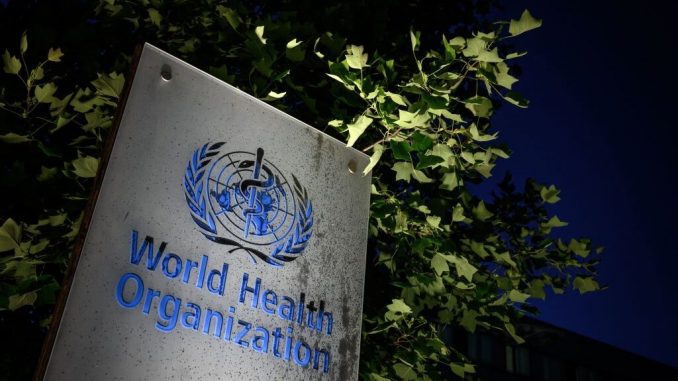

TOPSHOT – A photo taken in the late hours of May 29, 2020 shows a sign of the World Health Organization (WHO) at their headquarters in Geneva. (Photo by FABRICE COFFRINI/AFP via Getty Images)
OAN Newsroom
UPDATED 8:05 PM PT – Wednesday, March 31, 2021
A joint report by the World Health Organization and the Chinese government largely dismissed the theory that the novel coronavirus somehow originated in a Wuhan lab.
The long awaited results of the investigation by 17 WHO scientists and 17 Chinese experts was released on Tuesday. The report claimed the virus “most likely” reached humans from bats, either directly or indirectly through other small animals. It said while it presents a comprehensive review of the available data, it has “not yet found the source of the virus.”
The report shot down a long-held theory that the virus somehow leaked from the Wuhan Institute of Virology. On Wednesday, Chinese researchers said the report had been delayed to guarantee its quality.
The report of the international expert team studying the #COVID19 virus origins in a Wuhan field visit was published today: https://t.co/iTO4vtJ8iV@DrTedros calls for further studies, data on the virus origins & reiterates that all hypotheses remain open https://t.co/DXF9Vyv3eG
— World Health Organization (WHO) (@WHO) March 30, 2021
The report has come under fire by experts and several governments in the world, who accused the Chinese government of being less than transparent when it came to granting access to much needed data.
Reports last week suggested the WHO has an agreement with the Chinese government to grant the communist nation “veto power over communications concerning COVID.” Details of the report were also revealed two weeks ago by Chinese state media, after the government received the report in advance.
Reports detailed the communist government’s efforts in controlling the investigators’ visit to Wuhan.
At the beginning of the year, U.S. government intelligence supported the lab leak theory, after several researchers at the Wuhan Institute fell ill in the fall of 2019. The lead WHO researcher himself said while the lab leak was unlikely, it wasn’t off the table.
“We felt that that was the least likely or most unlikely scenario, it’s still possible, it’s still on the table, it really depends on what sort of evidence we have to take that further,” WHO researcher Dominic Dwyer said. “So we haven’t dismissed it. It’s really just a matter of getting the evidence to show that such a leak might happen. These things, fortunately, are pretty rare.”
In light of the report, the U.S. and 13 other nations issued a statement on Tuesday, voicing their concerns about the report. These included nations such as Britain, Canada, Israel, Japan and South Korea.
The statement said scientific missions should be able to do their work under conditions that produce independent and objective recommendations and findings.
Secretary of State Antony Blinken earlier this week noted his concerns over the methodology and process that went into writing the report, as well as the fact that Beijing apparently helped write it.

Secretary of State Antony Blinken spoke at the State Department in Washington, Tuesday, March 30, 2021. (Mandel Ngan/Pool via AP)
Even the Biden White House came down on the findings in the report Tuesday, saying the world deserves greater transparency.
“It lacks crucial data, information, it lacks access, it lacks transparency. It certainly, we don’t believe that, in our review to date, that it meets the moment, it meets the impact that this pandemic has had on the global community,” White House press secretary Jen Psaki stated. “That’s why we also have called for additional forward looking steps.”
An opinion piece in the Washington Post this week called the report “fatally flawed,” saying the investigation only puts the WHO further at odds with the U.S. government.
The WHO Director-General on Tuesday said the idea that the virus leaked from a lab should be followed up on, after initially saying investigators faced an uphill battle with the Chinese government during their four week mission.






Be the first to comment